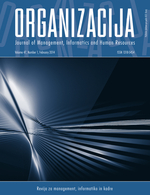Investigation of wastewater pollution in Slovenian textile industry and economic viability of effective treatment
Abstract
Wastewaters from textile industry are generally highly loaded. Their load can be determined by engineering standards, standards of best available technologies and annual operational monitoring. Investigation presented covers all textile factories in Slovenia obligated by the Directive 96/61/ES on integrated pollution prevention and pollution control; two textile factories in Slovenia were studied in details. In the majority of discussed textile factories significantly higher pollution emissions that would be expected on the basis of engineering and Best Available Techniques (BAT) standards were found. The reason is outdated technological equipment which departs significantly from BAT standards. As the textile factories in Slovenia are mostly connected to public sewer networks which are terminated by central treatment facility, economic viability of installing treatment plants for efficient wastewater pre-treatment is questionable. It is mandatory to achieve the required criteria for discharge into public sewers. More efficient treatment is justified only when it is cost efficient. Economic viability is assessed in terms of costs, which consist of expenses for fresh water supply, environmental taxes, charges for wastewater collection and wastewater treatment and expenses of effective treatment within the factories.
Refbacks
- There are currently no refbacks.

